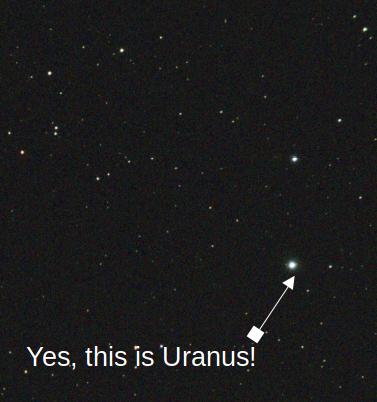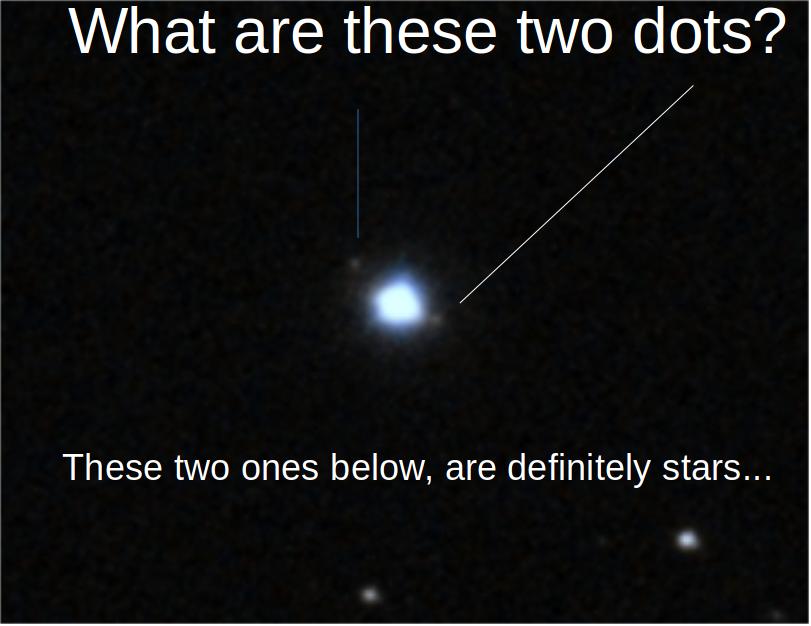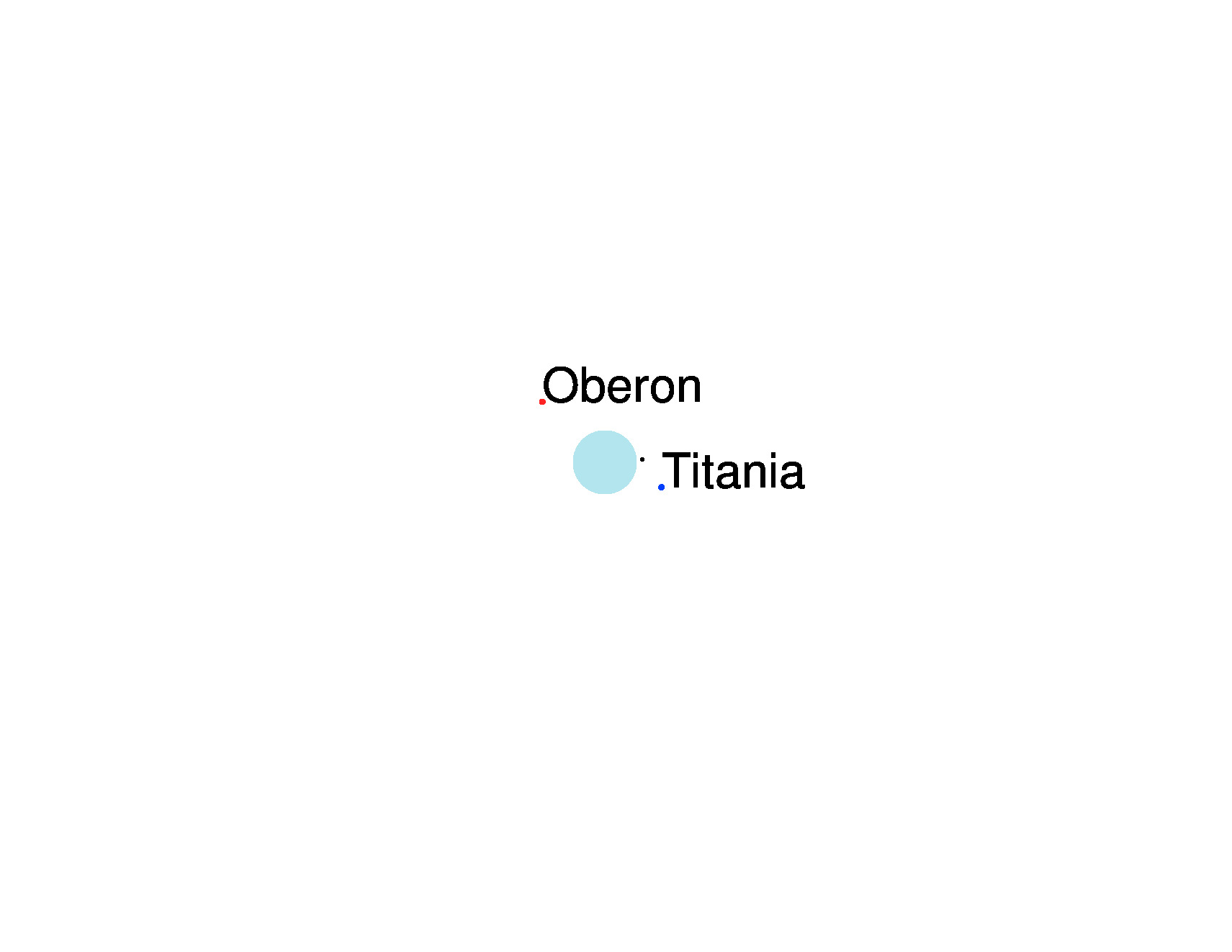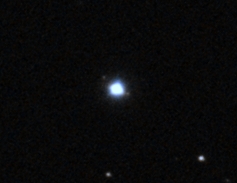As an amateur astronomer, there’s nothing quite like the thrill of capturing something elusive and distant in our solar system. Recently, I embarked on a new challenge: imaging Uranus, the ice giant, with my Seestar telescope. Given its distance from Earth—nearly 2.9 billion kilometers away—this was no small feat. But of course, the telescope was able to image it; how could I doubt this fantastic tool!

After zooming in on the picture, I noticed two dots in the vicinity of Uranus. Could they be satellites of the planet?

Curiosity piqued, I turned to a trusted resource: this website, which provides detailed information on the positions of Uranus’s satellites. After cross-referencing my image with the satellite positions, I was thrilled to discover that I had indeed captured two of Uranus’s largest moons: Oberon and Titania.
Below, you can move the cursor (yellow dot) left and right to see the theoretical positions of Oberon and Titania on 31st August 2024 at 02:28 UTC ( data extracted from the website mentioned above, left image), compared to the image taken with the telescope (right image).

